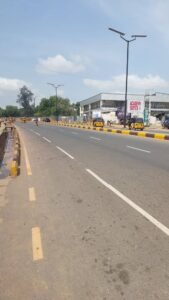Fears mount of second landslide, disease outbreak at Papua New Guinea disaster site

There are growing concerns about another landslide and outbreak of diseases at the scene of Papua New Guinea’s mass-casualty disaster because of water streams and bodies trapped beneath the tons of debris that swept over a village, a United Nations official said Tuesday.
Recall that more than 2,000 people are feared buried following a catastrophic landslide that destroyed a remote highland village in Papua New Guinea on Firday.
The blanket of debris has become more unstable with recent rain and streams trapped between the ground and rubble, said Serhan Aktoprak, chief of the International Organization for Migration’s mission in Papua New Guinea.
The U.N. agency has officials at the scene in Enga province helping shelter 1,600 displaced people. The agency estimates 670 villagers died, while Papua New Guinea’s government has told the United Nations it thinks more than 2,000 people were buried. Five bodies had been retrieved from the rubble by Monday.
“We are hearing suggestions that another landslide can happen and maybe 8,000 people need to be evacuated,” Aktoprak told The Associated Press.
“This is a major concern. The movement of the land, the debris, is causing a serious risk, and overall the total number of people that may be affected might be 6,000 or more,” he said. That includes villagers whose source of clean drinking water has been buried and subsistence farmers who lost their vegetable gardens.
“If this debris mass is not stopped, if it continues moving, it can gain speed and further wipe out other communities and villages further down” the mountain, Aktoprak said.
Scenes of villagers digging with their bare hands through muddy debris in search of their relatives’ remains were also concerning.
“My biggest fear at the moment is corpses are decaying, … water is flowing and this is going to poise serious health risks in relation to contagious diseases,” Aktoprak said.
The Papua New Guinea government on Sunday officially asked the United Nations for additional help and to coordinate contributions from individual nations.
An Australian disaster response team was scheduled to arrive Tuesday in Papua New Guinea, which is Australia’s nearest neighbor. It will include a geohazard assessment team and drones to help map the site.
Experts have blamed climate change for the disaster.
Papua New Guinea is ranked as the world’s 16th most at-risk country to climate change and natural hazards, according to the 2022 World Risk Index.







